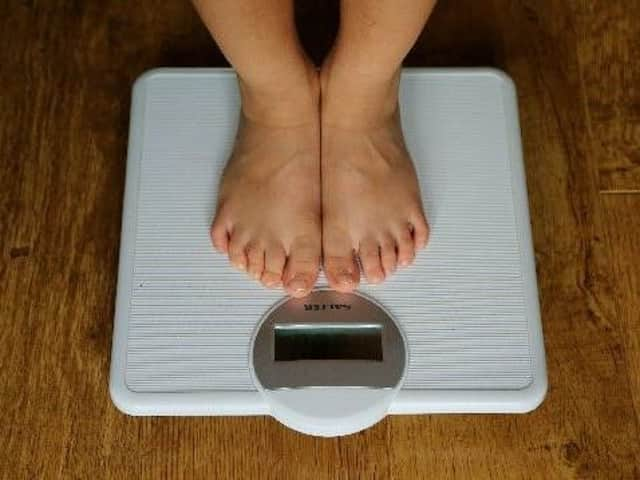When it comes to weight loss, exercise plays a crucial role alongside a balanced diet. The best workouts for weight loss incorporate a variety of elements—cardio, strength, and flexibility training. Each of these workout types brings its own benefits, and together they create a holistic approach that can help with not only burning calories but also improving overall fitness, strength, and range of motion. Let’s dive into each category, understand its benefits for weight loss, and explore how you can mix them into an effective workout routine.
1. Cardio Workouts: Burn Calories and Boost Heart Health
Cardiovascular exercises, or “cardio,” are often seen as the go-to option for weight loss. These exercises get your heart rate up, making your body work harder to circulate oxygen, and they burn a significant amount of calories in the process. Cardio exercises can be classified into high-intensity and moderate-intensity workouts, each with its own set of advantages.
High-Intensity Interval Training (HIIT)
HIIT has gained popularity because it provides an effective and efficient way to burn calories in a short amount of time. HIIT workouts involve alternating periods of intense activity with short rest or lower-intensity intervals. For instance, you might sprint for 30 seconds and then walk or jog for 30 seconds, repeating this cycle for 20-30 minutes.
Benefits for Weight Loss:
- HIIT helps in burning calories not just during the workout but also afterward, thanks to the “afterburn effect,” where your body continues to burn calories for hours post-exercise.
- It’s a great choice if you’re short on time but still want a high-impact workout that aids in fat loss.
Examples of HIIT Exercises:
- Burpees
- Jump squats
- Mountain climbers
- Sprint intervals
Steady-State Cardio
Steady-state cardio involves maintaining a consistent level of effort for a longer period. Examples include jogging, swimming, and cycling at a moderate pace for 30 minutes or more. While it doesn’t burn as many calories in a short time like HIIT, it’s a great way to build endurance and is often easier on the joints.
Benefits for Weight Loss:
- Helps in building a strong cardiovascular base, which is important for longer workouts.
- Supports fat-burning as your body tends to use fat as fuel during lower-intensity activities.
Examples of Steady-State Cardio:
- Brisk walking
- Cycling
- Swimming
- Elliptical machine
2. Strength Training: Build Muscle to Boost Your Metabolism
Strength training (or resistance training) involves exercises that build and tone muscle through the use of weights, resistance bands, or body weight. While cardio burns calories during the workout, strength training helps build lean muscle, which increases your resting metabolic rate (RMR). This means your body will naturally burn more calories even when you’re not working out.
Why Strength Training is Important for Weight Loss
When you lose weight, there’s a risk of losing muscle along with fat. By incorporating strength training, you’re preserving and even building muscle, which can help maintain a healthier body composition and prevent the slowdown in metabolism often associated with weight loss.
Benefits for Weight Loss:
- Muscle burns more calories at rest than fat, so building muscle can help you burn more calories over time.
- Strength training can help prevent the loss of lean body mass, which is common when only focusing on cardio for weight loss.
Types of Strength Training Workouts
Free Weights (Dumbbells and Barbells): These allow for a wide range of motion and engage stabilizing muscles, making them effective for both muscle-building and calorie-burning.
Bodyweight Exercises: Push-ups, squats, and lunges are great for building strength without the need for equipment.
Resistance Bands: A versatile option that can target different muscle groups, resistance bands are particularly useful for home workouts.
Machines: Weight machines can be a good option for beginners, as they provide stability and help ensure good form.
3. Flexibility and Mobility Training: Support Recovery and Enhance Performance
Flexibility exercises like stretching and mobility work are often overlooked in weight-loss programs, but they play a vital role. Flexibility and mobility training improve your range of motion, which can prevent injuries and improve form during workouts. While they don’t burn as many calories as cardio or strength training, they can enhance the effectiveness of your overall workout regimen and aid in recovery, making it easier to stick with a consistent exercise routine.
The Benefits of Flexibility and Mobility Training for Weight Loss
Incorporating flexibility and mobility exercises into your routine helps your body stay in top form. Better flexibility can lead to improved performance in other workouts, which indirectly supports weight loss by allowing you to work out more efficiently and effectively.
Benefits for Weight Loss:
- Reduces the risk of injury, allowing for more consistent training.
- Speeds up recovery time by reducing muscle stiffness and soreness.
- Improves posture and range of motion, which can make other exercises easier to perform.

Examples of Flexibility and Mobility Exercises
Dynamic Stretching: Best done before a workout to warm up the muscles. Examples include leg swings, arm circles, and torso twists.
Static Stretching: Holding a stretch for 15-30 seconds after your workout can help lengthen the muscles and prevent stiffness.
Foam Rolling: This self-myofascial release technique can alleviate tightness in muscles, reduce soreness, and improve circulation.
Yoga and Pilates: These practices blend flexibility, balance, and strength, making them ideal for enhancing mobility and supporting weight loss goals.
Creating a Balanced Workout Routine for Weight Loss
Combining cardio, strength training, and flexibility exercises can help you build a comprehensive workout plan that maximizes calorie burn while supporting muscle growth and recovery. Here’s a sample weekly plan:
- Day 1: HIIT cardio + 10-15 minutes of dynamic stretching
- Day 2: Strength training (focus on upper body) + 10 minutes of static stretching
- Day 3: Steady-state cardio (such as a 45-minute brisk walk) + foam rolling
- Day 4: Rest or gentle yoga session for flexibility and recovery
- Day 5: Strength training (focus on lower body) + 10-15 minutes of static stretching
- Day 6: HIIT cardio + mobility exercises
- Day 7: Rest or low-intensity cardio (such as a light walk) + foam rolling
This plan ensures a mix of high and moderate-intensity workouts, muscle-building activities, and flexibility exercises. The variety keeps things interesting and prevents workout burnout, while also helping you make consistent progress toward weight loss goals.
Tips for Maximizing Results
- Stay Consistent: Consistency is key. Even the best workout plan won’t be effective if it’s not followed regularly.
- Focus on Progression: Gradually increase intensity, duration, or resistance as you get stronger and more fit.
- Prioritize Recovery: Rest and recovery are crucial for avoiding burnout and injury. Incorporate rest days, sleep well, and stay hydrated.
- Combine with a Healthy Diet: Exercise alone isn’t enough for weight loss; pair your workouts with balanced nutrition for the best results.
Conclusion
The best workouts for weight loss combine cardio, strength, and flexibility. Cardio burns calories, strength training builds metabolism-boosting muscle, and flexibility training keeps you agile and reduces the risk of injury. By embracing all three, you’re setting yourself up for long-term success on your weight loss journey. Additionally, products like Capsiplex Trim can support your energy and metabolism, helping you maximize the benefits of your exercise routine. So, lace up those sneakers, grab your weights, and roll out the yoga mat—your best self awaits!




